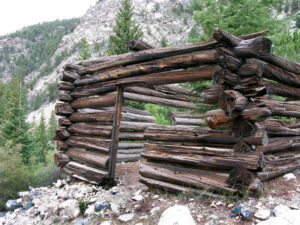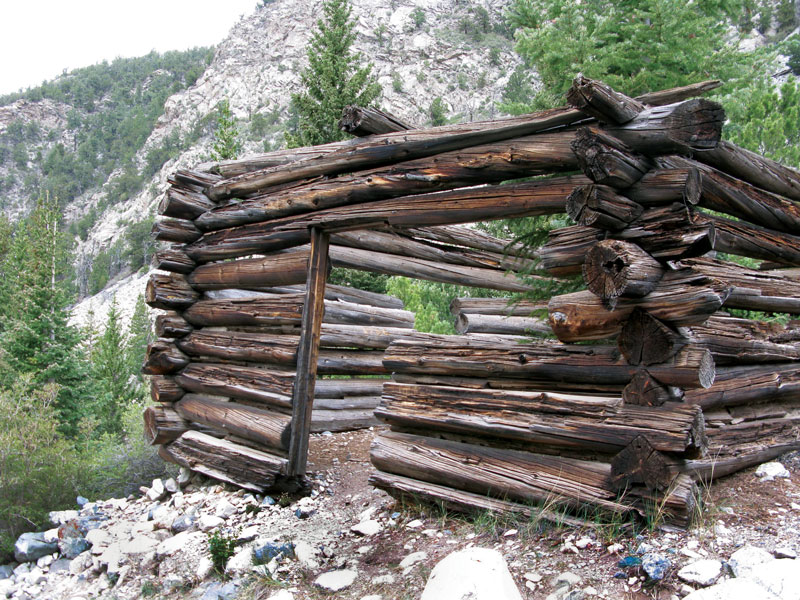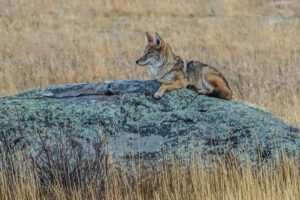By Kenneth Jessen
Excluding ghost towns on private property, possibly the hardest to reach by vehicle is located in Alamosa County near the base of three fourteen thousand peaks, Ellingwood Point (14,048 feet), Blanca Peak (14,345 feet) and Little Bear (14,036 feet). It was called Camp Commodore (a.k.a. Commodore Camp or simply Commodore). The treacherous road leading to the camp is called the Como Lake Road or Blanca Peak Road. According to experts in this area, it is among the most technical four-wheel drive roads in the state and is prone to roll-over accidents. There are many YouTube videos that will testify to the difficulty and one even shows a drive shaft split in two while another shows a dangerous roll over. (As a side note, I was a passenger up to Lake Como and so terrified, that I walked all the way back down.) But not to be ignored, the road to Holy Cross City is also quite difficult.
A normal stock four-wheel drive vehicle can make it quite a ways to the start of a long steep, rocky grade. From this point, those that want to avoid vehicle damage can hike up the trail two and a half miles to the first of two places called Camp Commodore just above 10,500 feet.

The story goes that in 1899 a group of miners located some free-milling gold along Holbrook Creek near the rugged mouth of Big Bear Canyon leading to the three peaks. They claimed the gold was “… as large as wheat kernels ….” It was discovered in a raspberry patch. (As a side note, USGS maps only show Holbrook Creek, and the name Big Bear Canyon seems to have been lost.)
Commodore was the first claim and was adopted as the name for both mining camps, one set up to the west closer to the mouth of the canyon and the other at Como Lake. The first and lower camp consisted of at least ten structures based on historic photographs. The largest log structure was a boardinghouse which also housed a store and the Hirst post office. Mail was delivered on horseback from Zapata far below. The post office operated only from June 19, 1899 to July 31, 1901. There is mention of saloons and a meat market. The second cluster of cabins was at Lake Como about two miles to the east and below the Commodore Mine. It is not known how many structures were located at the lake.
Initially a trail served the camps, and pack trains brought down the ore. Although history on this area is sparse, apparently Alamosa County Commissioners teamed up with miners to build a road to the two camps. There is also mention of an aerial tram down the mountain, however, the telltale straight line through the trees from either camp fail to support this claim.
What put the brakes on the development of the Commodore Mine and why the post office was only open for two years is litigation. Apparently there were two separate simultaneous claims. The halted production as ore was left in sacks and tools were abandoned to rust. Other mines in the general area did produce limited quantities of gold.
Contemporary observations by the author in the cirque between the three high peaks lend credence to a short-lived mining history. The author did see a partially filled case of dynamite and a vein of solid iron pyrite.
Like so many abandoned Colorado mining towns, it was founded more on optimism than reality.


